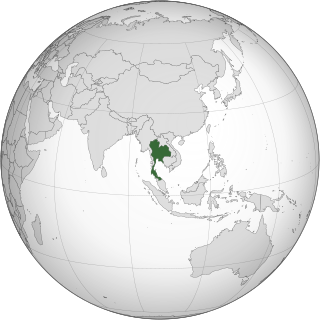E.164 is an international standard, titled The international public telecommunication numbering plan, that defines a numbering plan for the worldwide public switched telephone network (PSTN) and some other data networks.

A SIM card is an integrated circuit (IC) intended to securely store an international mobile subscriber identity (IMSI) number and its related key, which are used to identify and authenticate subscribers on mobile telephone devices. Technically the actual physical card is known as a universal integrated circuit card (UICC); this smart card is usually made of PVC with embedded contacts and semiconductors, with the SIM as its primary component. In practice the term "SIM card" refers to the entire unit and not simply the IC.

The North American Numbering Plan (NANP) is a telephone numbering plan for twenty-five regions in twenty countries, primarily in North America and the Caribbean. This group is historically known as World Zone 1 and has the telephone country code 1. Some North American countries, most notably Mexico, do not participate with the NANP.
Telephone number mapping is a system of unifying the international telephone number system of the public switched telephone network with the Internet addressing and identification name spaces. Internationally, telephone numbers are systematically organized by the E.164 standard, while the Internet uses the Domain Name System (DNS) for linking domain names to IP addresses and other resource information. Telephone number mapping systems provide facilities to determine applicable Internet communications servers responsible for servicing a given telephone number using DNS queries.
A toll-free telephone number or freephone number is a telephone number that is billed for all arriving calls. For the calling party, a call to a toll-free number from a landline is free of charge. A toll-free number is identified by a dialing prefix similar to an area code. The specific service access varies by country.
A telephone numbering plan is a type of numbering scheme used in telecommunication to assign telephone numbers to subscriber telephones or other telephony endpoints. Telephone numbers are the addresses of participants in a telephone network, reachable by a system of destination code routing. Telephone numbering plans are defined in each of the administrative regions of the public switched telephone network (PSTN) and in private telephone networks.
E.123 is an international standard by the standardization union (ITU-T), entitled Notation for national and international telephone numbers, e-mail addresses and web addresses. It provides guidelines for the presentation of telephone numbers, email addresses, and web addresses in print, on letterheads, and similar purposes.
MSISDN is a number uniquely identifying a subscription in a Global System for Mobile communications or a Universal Mobile Telecommunications System mobile network. It is the mapping of the telephone number to the subscriber identity module in a mobile or cellular phone. This abbreviation has several interpretations, the most common one being "Mobile Station International Subscriber Directory Number".
A Maritime Mobile Service Identity (MMSI) is effectively a maritime object's international maritime telephone number, a temporarily assigned UID, issued by that object's current flag state.
Telephone numbers in Switzerland are defined and assigned according to the Swiss telephone numbering plan administered by the Swiss Federal Office of Communications. The plan has been changed several times and the most recent reorganization was implemented in March 2002.

Telephone numbers in Italy are managed by the Autorità per le Garanzie nelle Comunicazioni (AGCOM), a national regulatory authority for the communication industry located in Rome.

Telephone numbers in the Republic of China (Taiwan) use a system of area codes, beginning 02 to 08. The leading digit(s) following the area code denote the network operator (Chunghwa Telecom and its competitors). Mobile numbers begin 09. The international code for calls into Taiwan is 886.

The regulation of telephone numbers in Germany is the responsibility of the Federal Network Agency of the German government. The agency has a mandate to telecommunications in Germany and other infrastructure systems.

Thailand's telephone numbering plan in Thailand is managed by the National Broadcasting and Telecommunications Commission (NBTC) in accordance with International Telecommunication Union's (ITU) recommendation E.164.
Telephone numbers in Canada follow the fixed-length format of the North American Numbering Plan (NANP) of a three-digit area code, a three-digit central office code, and a four-digit station or line code. This is represented as NPA NXX XXXX.
The following telephone numbers in Kenya are destination codes for international calls terminating in Kenya as well as the procedures for dialling internationally from within Kenya. Until 1999, Kenya shared its telephone numbering plan with Tanzania and Uganda, meaning that to make calls between the three countries, subscribers needed only dial the area code and number, a legacy of the East African Post and Telecommunications Corporation (EAPTC) which was dissolved in 1977. As a result of the reorganisation of Tanzania's numbering plan in that year, direct dialling was discontinued, although calls between the three countries do not require international dialling, only a special three-digit code.

A telephone number in Belgium is a sequence of nine or ten digits dialed on a telephone to make a call on the Belgian telephone network. Belgium is under a full number dialing plan, meaning that the full national number must be dialed for all calls, while it retains the trunk code, '0', for all national dialling.

A telephone number is a sequence of digits assigned to a landline telephone subscriber station connected to a telephone line or to a wireless electronic telephony device, such as a radio telephone or a mobile telephone, or to other devices for data transmission via the public switched telephone network (PSTN) or other public and private networks.
The Belize telephone numbering plan is the system used for assigning telephone numbers in Belize.







